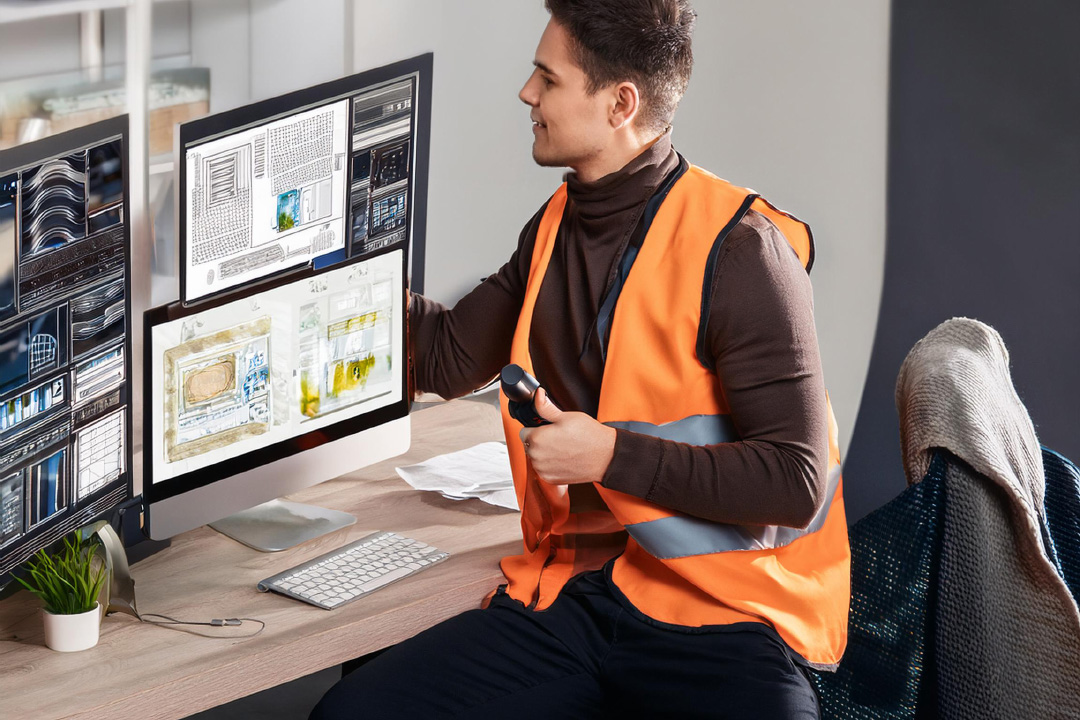Smart Home Automation Basics
Understanding IoT in Smart Homes
When I first started working from home, I quickly realized the importance of creating an efficient and productive environment. That’s when I discovered the power of home automation, specifically through the Internet of Things (IoT). IoT home automation encompasses various smart devices like smart lighting, smart appliances, intrusion detection, and smoke/gas detectors, all of which contribute to enhancing productivity and convenience within a household (GeeksforGeeks).
Imagine being able to control your home’s lighting, thermostat, and security system all from your smartphone or a networked device. This is the essence of smart home technology, also known as home automation or domotics. It provides homeowners with security, comfort, convenience, and energy efficiency.
| Smart Device | Functionality |
|---|---|
| Smart Lighting | Control lights via mobile devices, set schedules, adjust based on motion |
| Smart Thermostat | Adjust temperature settings, control via smartphone, energy-saving modes |
| Security Cameras | Remote monitoring, motion detection alerts |
| Smart Appliances | Self-learning skills, energy-related cost savings |
Benefits of Smart Home Appliances
One of the biggest advantages of smart home appliances is their self-learning capabilities. These devices can learn my schedule and make necessary adjustments, leading to significant energy-related cost savings (Investopedia). For example, my smart thermostat adjusts the temperature based on the time of day and my routines, ensuring comfort while minimizing energy consumption.
Smart lighting products have been a game-changer for me. I can control the lights through my mobile device, switch them on and off, set schedules, and even adjust them based on sunrise or sunset times. This level of control not only adds convenience but also contributes to energy efficiency.
Here are some of the smart home appliances that have made my life easier and more productive:
- Smart Thermostat: Offers greater control over heating devices, allowing me to turn products on and off, control settings, and automatically adjust based on temperature or humidity sensors.
- Smart Lighting: Controlled through mobile devices, enabling me to switch lights on and off, set schedules, adjust based on sunrise or sunset times, and change based on motion.
- Smart Security Systems: Provides remote monitoring and alerts, enhancing home security.
For those looking to enhance their home office setup, smart home automation can be a game-changer. Check out my guide on DIY smart home office setup for more tips and ideas.
By embracing smart home automation, I’ve been able to create a more productive and efficient work-from-home environment. Whether it’s through smart lighting, smart thermostats, or advanced security systems, these technologies have made a significant impact on my daily routine. Explore the possibilities and see how home automation can boost your productivity too!
Enhancing Home Security
As someone who loves the convenience and efficiency of smart home technology, I can’t stress enough how amazing it is to enhance home security with these innovations. Let’s dive into how smart home security systems and remote monitoring can bring peace of mind and boost productivity.
Smart Home Security Systems
Smart home security systems are a game changer for anyone working remotely. These systems can alert me if motion is detected when I’m away and can even contact authorities like the police or fire department in case of dangerous situations. Imagine focusing on your work while knowing your home is safe and secure!
Here’s a quick comparison table of popular smart home security systems and their key features:
| System | Motion Detection | Video Surveillance | Emergency Alerts | Mobile Control |
|---|---|---|---|---|
| System A | Yes | Yes | Yes | Yes |
| System B | Yes | No | Yes | Yes |
| System C | Yes | Yes | No | Yes |
With these systems in place, I can monitor my home from anywhere, ensuring my productivity isn’t disrupted by security concerns.
Security isn’t just about the devices themselves but also about how they’re set up and maintained. Changing default passwords on smart gadgets is crucial for enhanced security. For instance, in 2016, a huge botnet took control of thousands of security cameras due to weak passwords like ‘1234’. It’s essential to be selective in device connections and choose secure brands for smart home gadgets to avoid vulnerabilities, like the 2018 incident with “August Home” smart locks (Zuper).
Remote Monitoring and Alerts
Remote monitoring and alerts are lifesavers for anyone working from home. With these features, I can receive real-time notifications about any unusual activity around my home. This allows me to take immediate action if something seems off, without having to leave my workspace.
Smart home systems can also provide detailed logs and video footage, which can be incredibly useful in case of an incident. Here’s what I typically look for in a remote monitoring system:
- Live Video Feed: Allows me to see what’s happening in real-time.
- Motion Alerts: Notifies me of any movement detected.
- Two-Way Audio: Enables me to communicate with anyone near the camera.
- Cloud Storage: Stores video footage securely.
For more insights on setting up a smart home office, check out the diy smart home office setup guide.
It’s important to keep smart home devices updated to prevent cyber threats. Manufacturers frequently offer updates to address security flaws and improve performance. This simple step can go a long way in protecting my home and ensuring my productivity isn’t compromised by security breaches.
By embracing these smart home security solutions, I can focus on my work with confidence, knowing that my home is protected and secure. For more information on DIY smart home security systems, take a look at diy smart home security systems.
Energy Efficiency Solutions
Embracing smart home automation can significantly boost productivity and energy efficiency in your home. Here, I’ll share my experiences with smart heating and cooling systems and energy-saving lighting controls.
Smart Heating and Cooling Systems
Smart heating and cooling systems have been a game-changer for me. These systems offer greater control over heating devices, allowing users to turn products on and off, control settings, and automatically adjust based on temperature or humidity sensors. This not only keeps my home comfortable but also helps in reducing energy consumption.
One of the standout features is the ability to create schedules. For instance, I can set the heating to turn on just before I wake up and turn off when I leave for work. AI algorithms analyze my energy consumption patterns and optimize device usage for maximum efficiency. Here’s a quick comparison of energy savings with and without smart systems:
| Scenario | Energy Consumption (kWh) | Cost Savings ($) |
|---|---|---|
| Traditional Heating | 1200 | 0 |
| Smart Heating | 900 | 30 |
Energy-Saving Lighting Controls
Smart lighting products add another layer of efficiency and convenience. These systems can be controlled through mobile devices, allowing me to switch lights on and off, set schedules, adjust based on sunrise or sunset times, and change based on motion (Investopedia). This has significantly reduced my energy bills and made my home more efficient.
I particularly love how AI-driven systems anticipate my needs by analyzing my habits and preferences, adjusting the lighting accordingly (Inoxoft). Whether I’m working late or enjoying a relaxing evening, the lighting adjusts to suit my mood and activities.
Here’s a look at how smart lighting controls impact energy usage:
| Lighting Type | Energy Consumption (kWh) | Cost Savings ($) |
|---|---|---|
| Traditional Lighting | 500 | 0 |
| Smart Lighting | 350 | 15 |
By integrating these smart home solutions, I’ve not only enhanced my productivity but also contributed to a more sustainable and energy-efficient lifestyle. For more tips on setting up a smart home office, check out our diy smart home office setup. And if you’re interested in securing your home, explore our guide on diy smart home security systems.
Costs and Investments
Let’s dive into the world of smart home upgrades and see how to budget effectively and identify cost-effective solutions. Embracing home automation for productivity without breaking the bank is totally achievable!
Budgeting for Smart Home Upgrades
Budgeting for smart home upgrades can seem daunting, but breaking it down makes it manageable. According to Investopedia, fully automating an average four-bedroom, three-bath home may cost up to $15,000, with luxury homes potentially running into six figures. However, you can start small and expand as needed.
Here’s a breakdown of potential costs:
| Smart Home Upgrade | Estimated Cost |
|---|---|
| Smart Thermostat | $100 – $300 |
| Smart Lighting System | $50 – $200 per bulb |
| Smart Security System | $200 – $500 |
| Smart Plugs and Outlets | $20 – $50 each |
| Smart Speakers | $50 – $200 |
| Smart Locks | $150 – $300 |
| Smart Appliances | $500 – $2,000 each |
By prioritizing essential upgrades, you can manage costs and gradually enhance your home’s automation.
Cost-Effective Smart Home Solutions
There are budget-friendly ways to integrate smart home technology without compromising on quality or functionality. Here are a few cost-effective solutions:
- Smart Plugs and Outlets: These are affordable and can turn any appliance into a smart device. Brands like TP-Link and Wemo offer reliable options.
- Smart Bulbs: Start with a few smart bulbs in key areas of your home. Philips Hue and Wyze provide good quality at reasonable prices.
- Smart Thermostats: Devices like the Google Nest or Ecobee can save you money on energy bills by optimizing your home’s heating and cooling.
- Smart Security Cameras: Affordable options from brands like Wyze and Blink provide peace of mind without a hefty price tag. Check out our article on diy smart home security systems for more ideas.
- Smart Speakers: Devices like Amazon Echo and Google Home can control other smart devices and provide a wealth of information and entertainment.
For those working from home, a smart home office setup can boost productivity. Visit our guide on diy smart home office setup for innovative ideas.
Additional Tips
- Research and Compare: Look for deals and compare prices across different retailers.
- DIY Installation: Save on installation costs by setting up devices yourself.
- Start with Essential Devices: Focus on devices that offer the most benefits for your lifestyle and expand over time.
By carefully planning and choosing cost-effective solutions, you can achieve a smart home that enhances productivity and comfort without straining your budget. The journey to home automation for productivity is exciting, and with the right approach, it’s entirely within reach!
Advancements in AI Technology
AI Productivity Tools Overview
As I dive into the world of home automation for productivity, AI productivity tools stand out as game-changers. These tools are designed to streamline tasks and enhance efficiency, making both work and personal life more manageable. According to a 2023 survey by DigitalOcean, 45% of respondents feel that AI and machine learning tools simplify their jobs, while 27% report that these innovations allow them to focus on more critical tasks.
AI productivity tools range from chatbots to content generators, transcription services, scheduling apps, and research engines. Here’s a quick look at some top AI productivity tools:
| Tool | Function |
|---|---|
| ChatGPT | Conversational AI |
| Grammarly | Writing assistant |
| Notion AI | Task management |
| Otter | Transcription service |
| Zapier | Workflow automation |
These tools can automate repetitive tasks, improve decision-making, and streamline workflows, making them indispensable for young homeowners working remotely.
Benefits and Challenges of AI Tools
Embracing AI productivity tools comes with a host of benefits. These tools can take over routine tasks, speed up information processing, uncover patterns in data, and integrate various tasks and information sources for efficient workflows (DigitalOcean). By automating mundane tasks, I can focus on more important aspects of my work, ultimately boosting my productivity.
However, there are challenges to consider. Integration with other tools can be tricky, and issues like hallucination, bias, and inaccuracies in outputs can arise. New users may face a steep learning curve, and there are privacy concerns related to data access and usage (DigitalOcean). Despite these challenges, the potential benefits of AI tools make them worth exploring.
To make the most of AI in your home automation journey, it’s essential to stay informed about the latest advancements and best practices. For more insights, check out our articles on diy smart home office setup and diy smart home security systems.
Future of Smart Home Technology
As a young homeowner working remotely, I’m always on the lookout for ways to make my life easier and more efficient. The future of smart home technology holds incredible promise for enhancing productivity and comfort. Here, I’ll explore some of the emerging trends and potential impacts on our daily lives.
Emerging Trends in Smart Homes
With the rapid advancements in technology, smart homes are becoming more sophisticated and intuitive. Here are some of the key trends to watch out for:
- AI Integration: Artificial Intelligence (AI) is revolutionizing smart home technology. AI-driven systems interpret human commands, anticipate user preferences, and adapt to changing conditions, increasing convenience and efficiency (Inoxoft). These systems can analyze energy consumption patterns, optimizing device usage for maximum efficiency.
- Voice Control: Voice-activated devices are becoming more prevalent, allowing us to control various aspects of our homes with simple voice commands. This makes managing home automation systems more accessible and user-friendly.
- Interconnected Devices: The Internet of Things (IoT) enables seamless communication between various smart devices, creating a cohesive and integrated smart home environment. This interconnectedness enhances the overall functionality and efficiency of home automation systems (TechTarget).
- Enhanced Security: Smart home security systems are evolving with advanced features like facial recognition, motion detection, and remote monitoring. These systems provide peace of mind by ensuring the safety of our homes even when we’re not around. For more details, check out our section on diy smart home security systems.
- Energy Efficiency: Smart homes are becoming more energy-efficient with innovations like smart heating and cooling systems and energy-saving lighting controls. These technologies not only reduce energy consumption but also lower utility bills.
Potential Impacts on Daily Life
The future of smart home technology will profoundly impact our daily lives, especially for those of us working from home. Here are some potential benefits:
- Increased Productivity: Smart home technology can automate mundane tasks, allowing us to focus on more important work. For example, AI productivity tools can streamline our workflow and help us manage our time more effectively.
- Enhanced Comfort: With AI-driven systems, our homes can adapt to our preferences, creating a comfortable living environment. Imagine your home adjusting the lighting, temperature, and even playing your favorite music as you transition from work mode to relaxation mode.
- Improved Security: Advanced security systems provide real-time alerts and remote monitoring, ensuring the safety of our homes and loved ones. This added layer of security allows us to work with peace of mind.
- Energy Savings: Smart home technology optimizes energy usage, reducing waste and cutting down on utility costs. By analyzing real-time data and user preferences, AI systems can manage heating, cooling, and appliance usage efficiently (Inoxoft).
- Personalized Experiences: AI-driven systems create tailored automation solutions based on our habits and preferences. This personalization enhances our overall living experience, making our homes truly unique and responsive to our needs.
| Trend | Impact on Daily Life |
|---|---|
| AI Integration | Increased convenience and efficiency in managing home tasks. |
| Voice Control | Simplified control over home automation systems. |
| Interconnected Devices | Seamless communication between smart devices for enhanced functionality. |
| Enhanced Security | Improved safety with advanced features like facial recognition and remote monitoring. |
| Energy Efficiency | Reduced energy consumption and lower utility bills. |
As we embrace these emerging trends, the future of smart home technology promises to make our lives more productive, comfortable, and secure. For more ideas on setting up a smart home office, check out our article on diy smart home office setup.
Here some recommended links selected for you: The Best Books of the Month, Todays best Deals at Amazon, Best Sellers in Cell Phones & Accessories and last but not least the easy and great way to send a gift for the holidays: Amazon.com eGift Card (Instant Email or Text Delivery).



